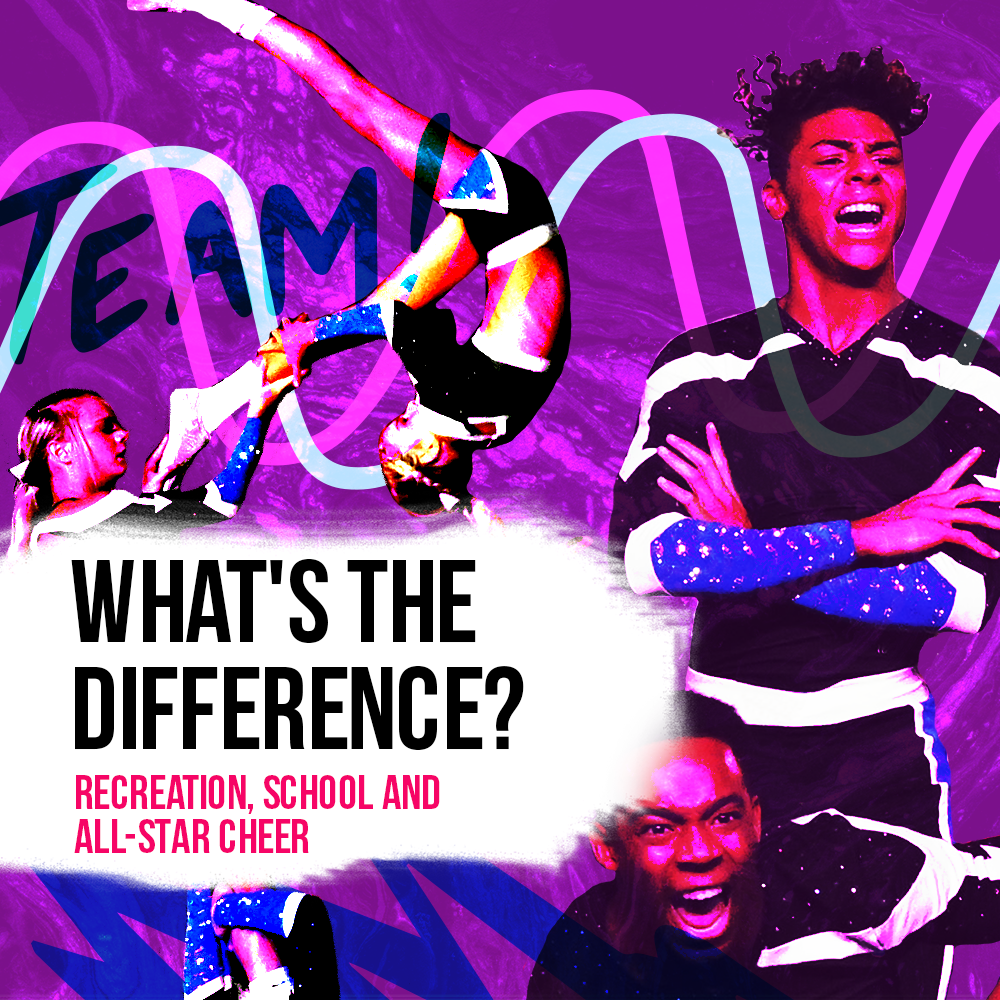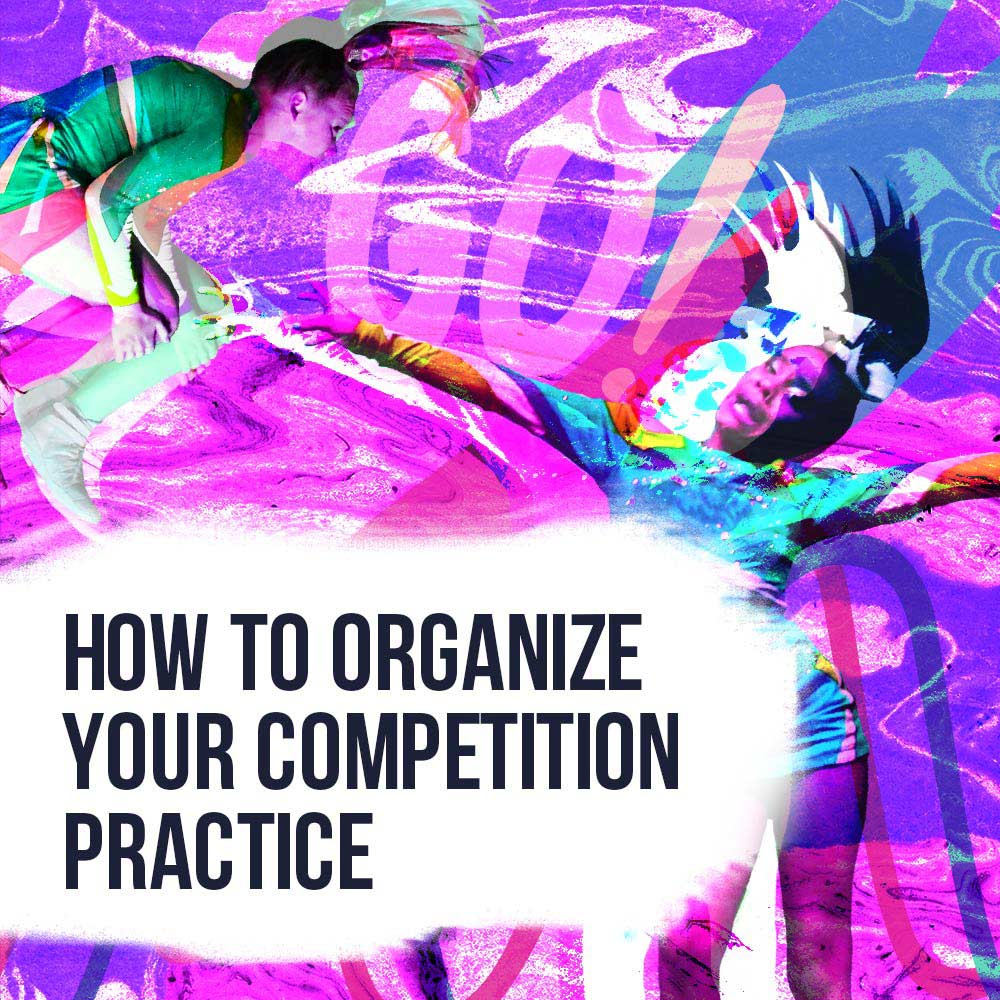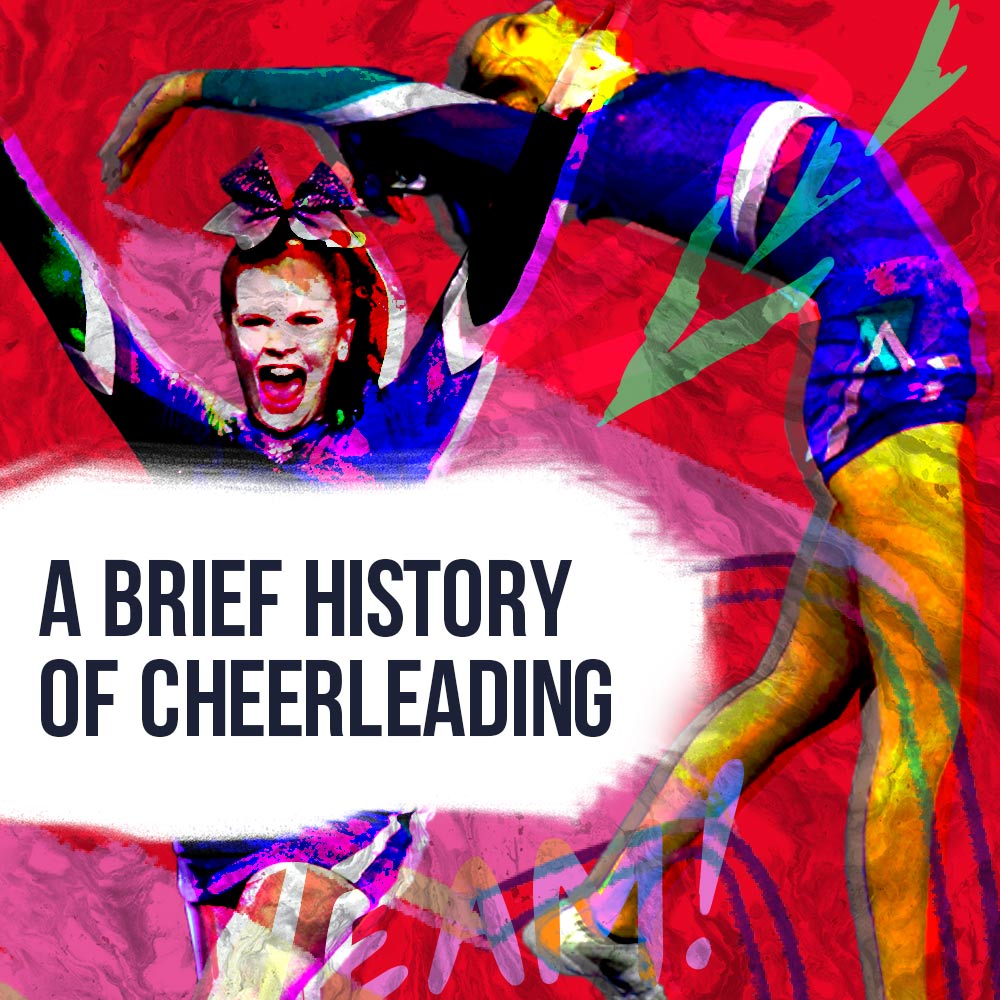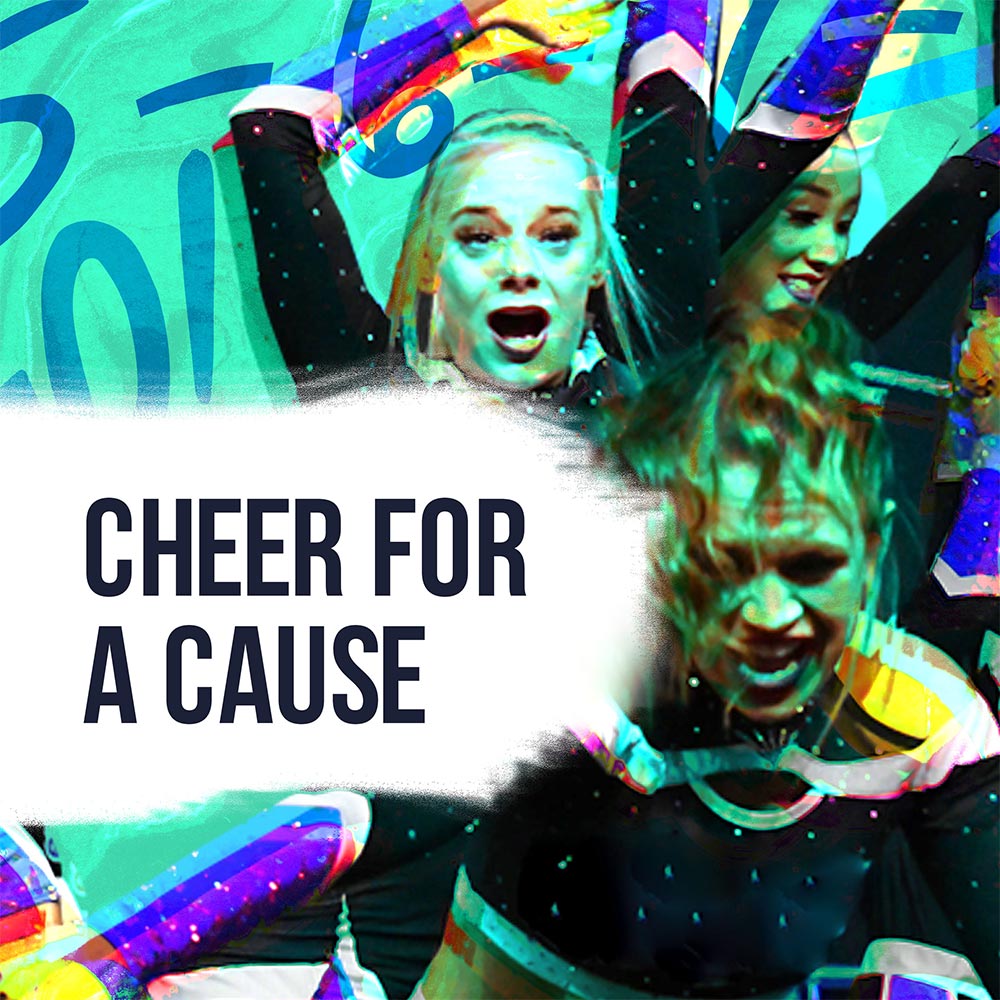
When someone outside the world of cheerleading thinks about cheerleading, they often are thinking about something like the Dallas Cowboy Cheerleaders. However, anyone inside the world of cheer knows that professional teams such as this are more like a dance team than a true cheerleading squad.
So what is cheerleading, then?
Cheerleading is a lot of different things to a lot of different people. However, all forms of cheerleading have one thing in common – they are there to support an athletic team of some sort, even if that team is their own squad. Cheerleading falls into three major categories: recreational cheer; school cheer, and all-star cheer. Each of them has their own rules and expectations, and each has a unique set of standards.
Recreation
Recreational, or “rec,” cheer is the cheerleading that is done by athletes who are not associated with a specific school or school system, and is typically composed mostly of younger participants. If you see cheerleaders at a Pop Warner or Pee-Wee football game, then those are recreational cheerleaders. Recreational cheer is generally non-competitive. This is not to say that they don’t have competitions, normally the recreational governing group for their area hosts some sort of invitational. However, their competitions do not have national standards or standings. Normally rec cheer is there to help would-be cheerleaders begin to understand the fundamentals of sideline cheer, much in the same way that younger children participate in YMCA soccer, or some other introductory sport. Most rec cheerleaders are either in elementary or middle school, at least in the United States.
School
Once athletes enter middle school they often become part of the school cheerleading squads. These teams are there primarily to provide spirit and athletic support to other sports at the school. Sometimes several middle schools that feed into one high school will create an extramural team made up of athletes from each of those schools. However, once students enter high school, the governing rules and structures become more defined. Most of us remember the sideline cheerleaders from our high school days, cheering at football and basketball games (although in some places they cheer for volleyball, wrestling, or even gymnastics). Yet school cheerleading is more than just sideline cheerleading. Competitive high school cheerleading has been a growing sport for the last two decades, and most states now offer some sort of statewide competitive cheerleading format. School cheer is ultimately supported by the individual schools, and most of the competitions are run by state athletic organizations. However, some large private companies such as NCA and UCA do host national high school competitions.
Allstar
Some athletes decide they want to focus on the competitive elements of cheerleading, rather than being a sideline cheerleader. For these athletes the opportunities to compete with their school is not enough. As a result, they join an all-star cheerleading squad. These squads are made up of students from different schools, cities, and sometimes even different states to focus exclusively on competing at regional, national, and world-level competitions. The only teams they cheer for are themselves, and the focus is primarily on stunting, tumbling, and dance. While all-star cheer does still incorporate a cheer into their routine, it is typically secondary to the acrobatic and gymnastics skills they are exhibiting as part of their routine. These teams are supported by private companies for both their practice and coaching facilities as well as the competitions they attend.
Cheerleading has changed a lot in the last century. The sport was originally exclusively male, a group of men supporting other men at collegiate football games. However, the sport transitioned through the 20th century to become primarily female, although there are still coed teams. During those transitions the sport veered in three distinctly different directions. For the recreational cheerleaders, the prime focus is to enjoy cheering as a sport, and understand the fundamentals of both sideline and competitive cheer. For school cheerleading, the main focus is on providing spirit and support for the other athletic teams at their school, although there is a competitive element. Finally, all-star cheer focuses exclusively on the competition element of cheer. Understanding the differences between the three is critical to understanding where the sport has come from and where it is going.




















